By Alessandra Ressa
If you are in the mood for a beautiful walk that will ensure bizarre art, a step back in history, mazes of narrow pedestrian alleys, incredible mansions, gorgeous views of the city, and even a satisfactory workout, then head towards the hill of Scorcola following the tram tracks from Piazza Oberdan.
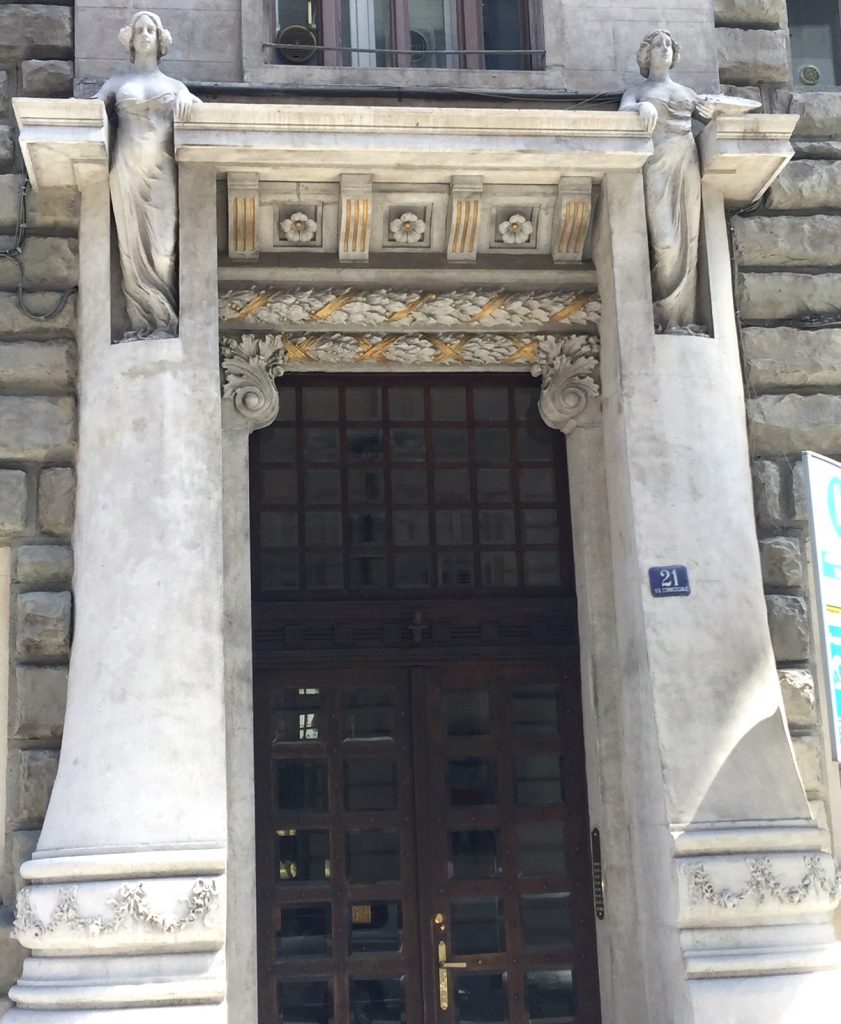
When you reach the beginning of Via Commerciale, admire the statues and decorations of the apartment buildings on your right side dating back to the beginning of the last century, built by famous local architects for the emerging Trieste’s middle class.

At the very beginning of Via Commerciale, stay on the right of the tram tracks and follow them until you reach a handful of steps that lead you to a steep uphill lane. This is the beginning of Salita della Trenovia, leading to the top of Scorcola.
At the end of the 1700s, the local aristocracy built luxurious homes facing the sea all around this beautiful hill you are about to climb. The mansions were surrounded by magnificent flower gardens as this hill was apparently well exposed to the sun and protected from the wind.
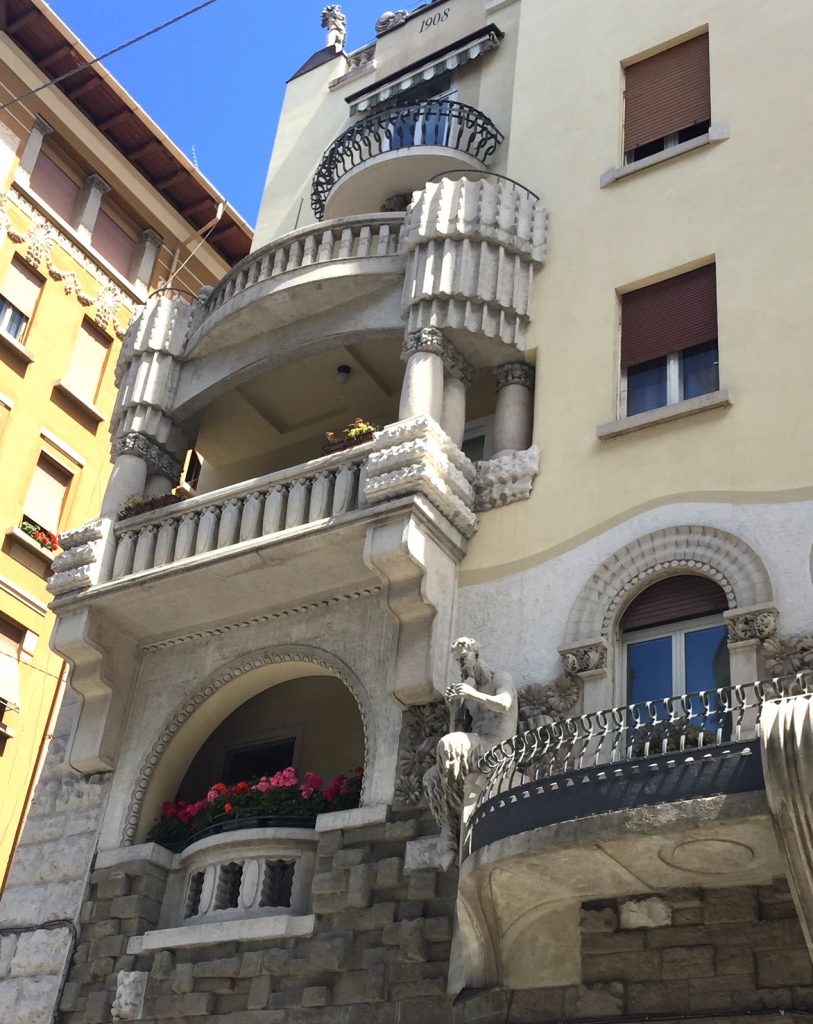
There were also less aristocratic settlements of simpler houses separated from one another by narrow alleys in a maze of stairways and tiny paths, many still standing today.

Follow Salita della Trenovia up and enjoy the cool shade of figs and wild plums which in summer provide the most refreshing snack.

At the top of the lane, more steps will take you back to the tram tracks. These days, there sadly being no tram in operation, you can enjoy taking some really daring pictures along the tracks. Once you have crossed the tracks stay on your left, but admire the Liberty style villa on your right with its immense cedar trees.
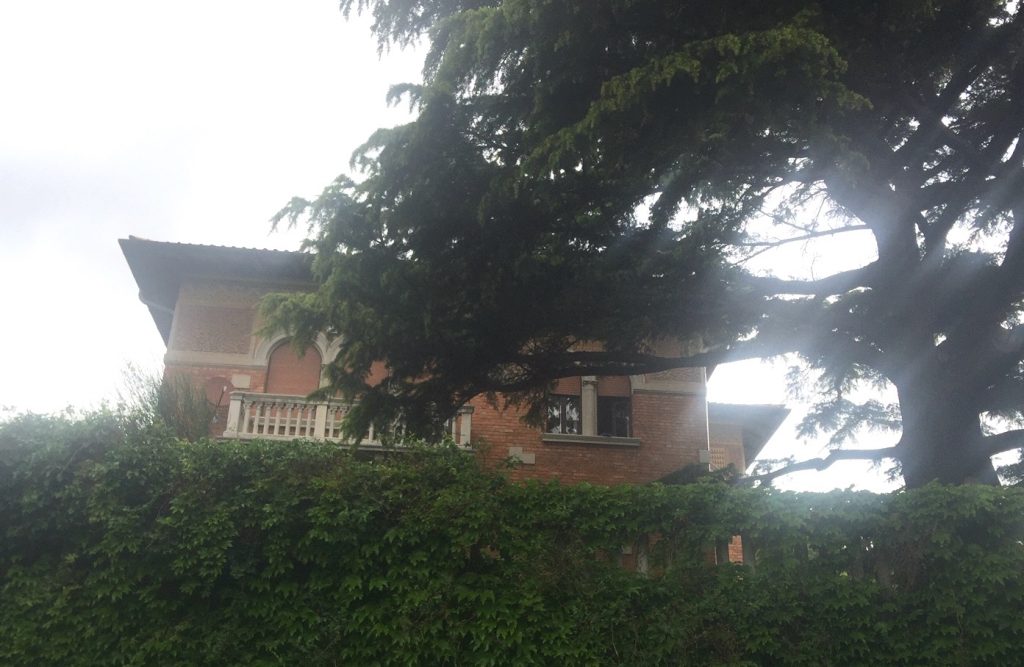
Before you continue your climb up the narrow pedestrian lane (do not take wider streets if you want to avoid reckless Triestini driving up and down at high speed) notice the big stone arch on your left that in the good old times led to a now semi-abandoned villa.

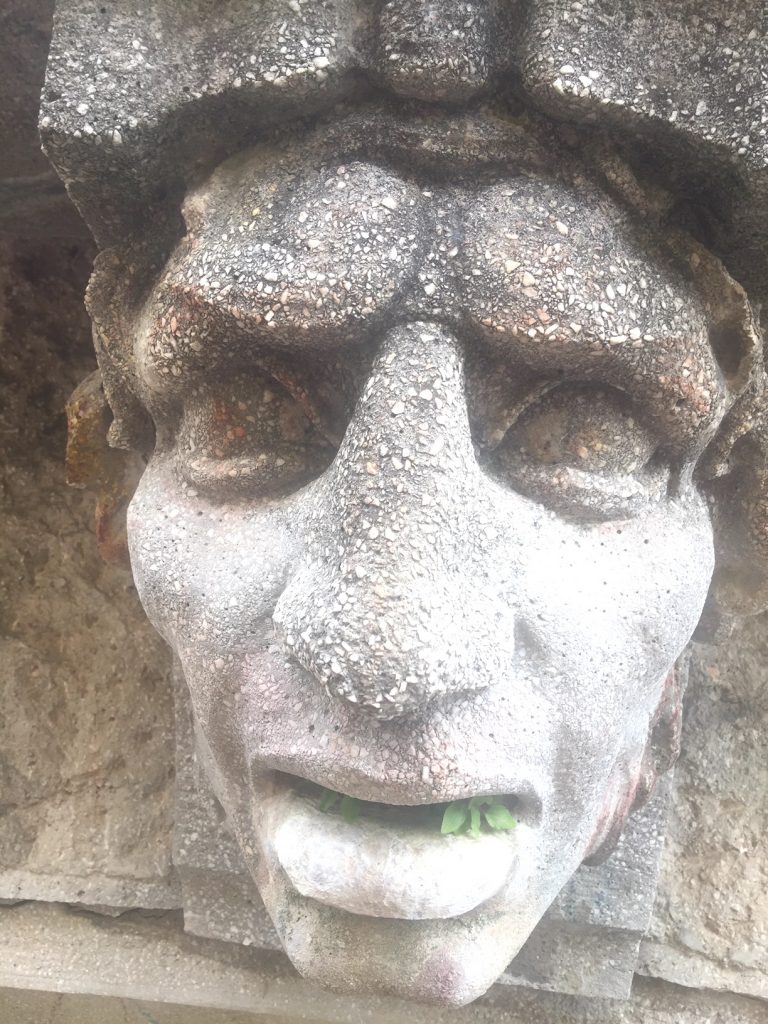
Being private property, the gate of the arch is usually closed. I was lucky enough, however, to find it open and trespassed. What a disappointment! The luxurious park that at some point must have surrounded the villa has been sold in lots and built upon in every possible ugly style you can imagine.
Houses, apartment buildings, huge cement-walled condos, all with prime view of the city now pave the way to the villa I was at this point really eager to find. And I found it. Semi-abandoned but still in good shape, it appears.
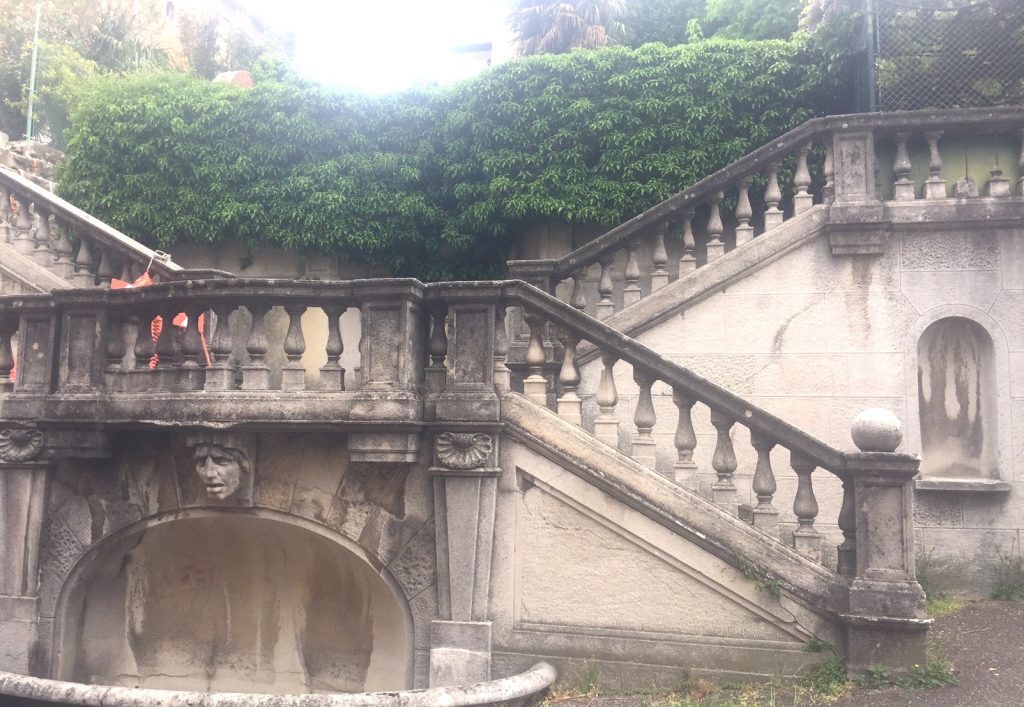
Of the park that must have surrounded it not a tuft of grass has remained, but mercifully, the greedy generations of developers have spared an incredibly looking construction that must have been a fountain surrounded by stairs that probably led to terraced vineyards and now lead to more houses.
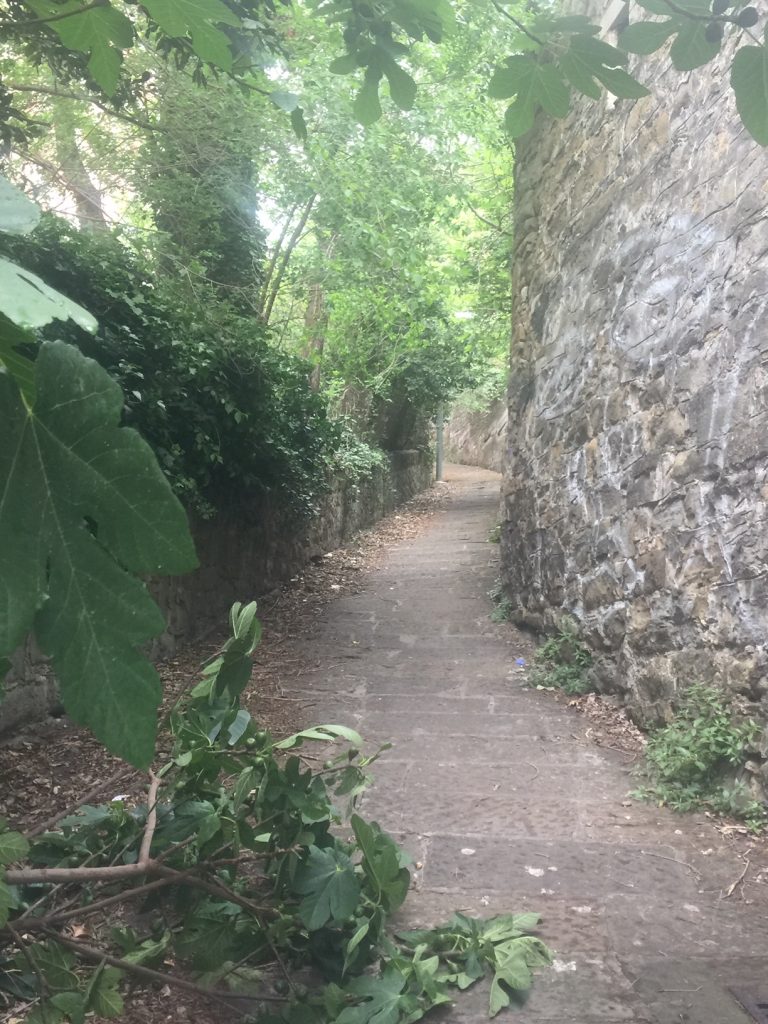
I walked up those stairs, kept in terrible condition, to reach, to my surprise, yet another narrow lane covered in crawling vegetation.

Well, what do you know! It’s Vicolo dei Gattorno, and no surprise, it’s full of gatti, the Italian word for cats…..
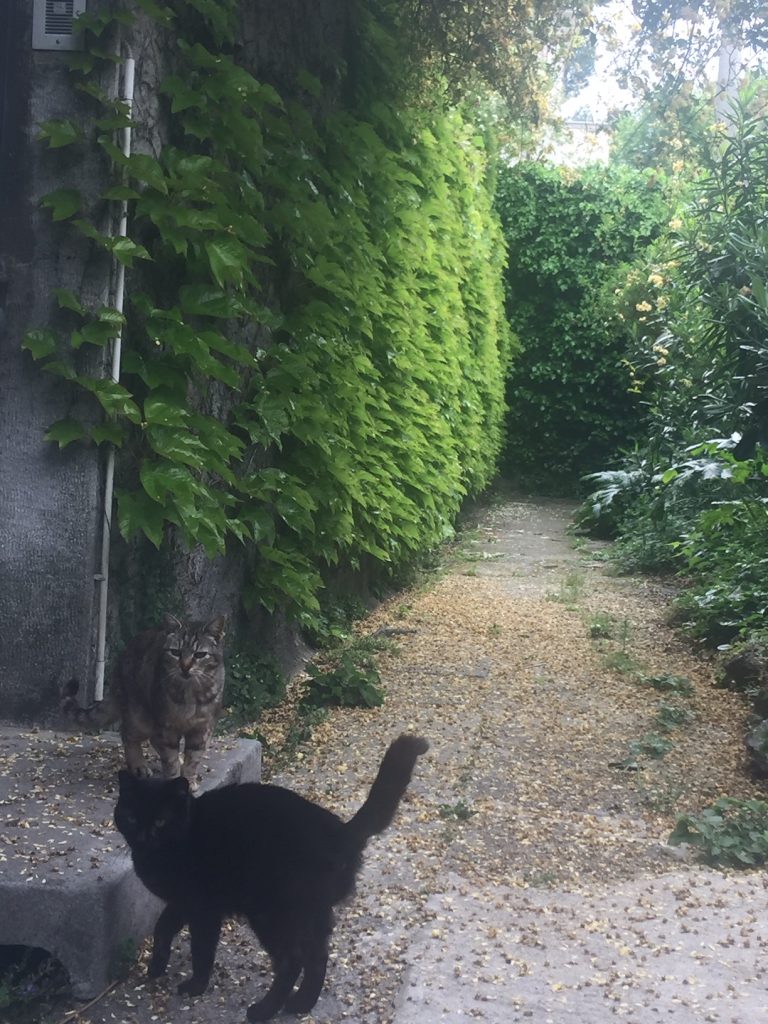
I couldn’t find much information about the villa below, and, having trepassed, I didn’t want to approach residents to ask. So I went back the way I came and I continued my climb up Salita della Trenovia.
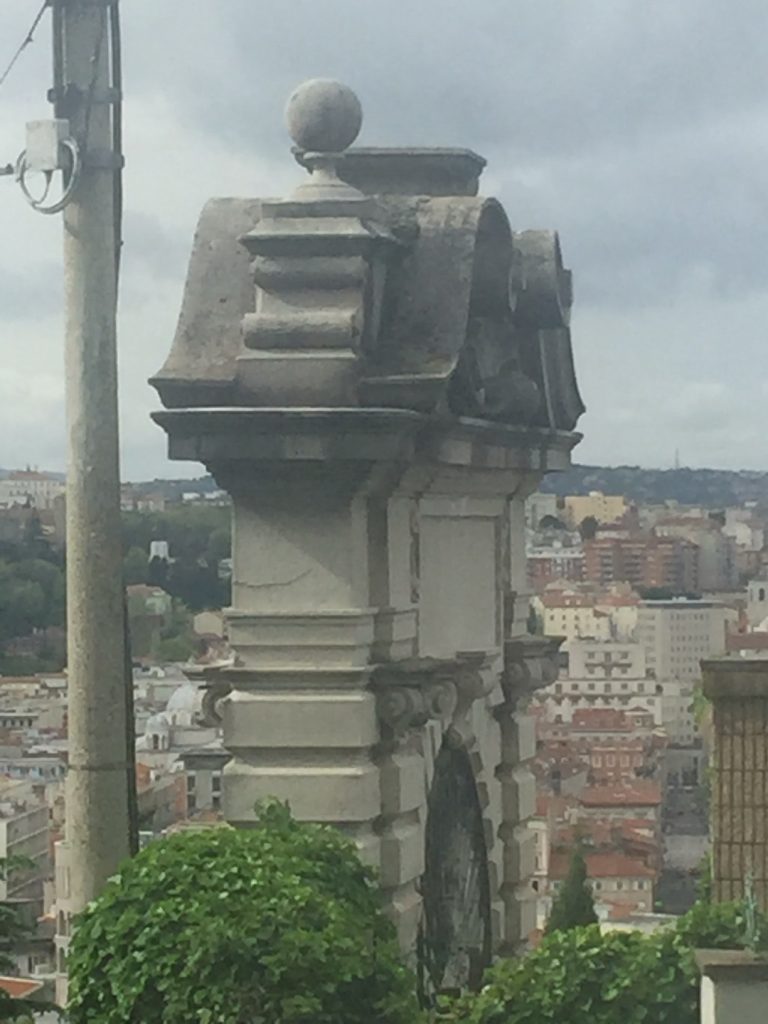
Narrow lanes and old stone stairways surrounded by crumbling walls alternate each other in this bizarre part of Trieste.

Every here and there a door to houses hidden by walls or vegetation, and while you climb breathing heavily and full of perspiration you can’t help wondering how the residents manage such a walk every day. No wonder I’ve never met a soul in this area of town.
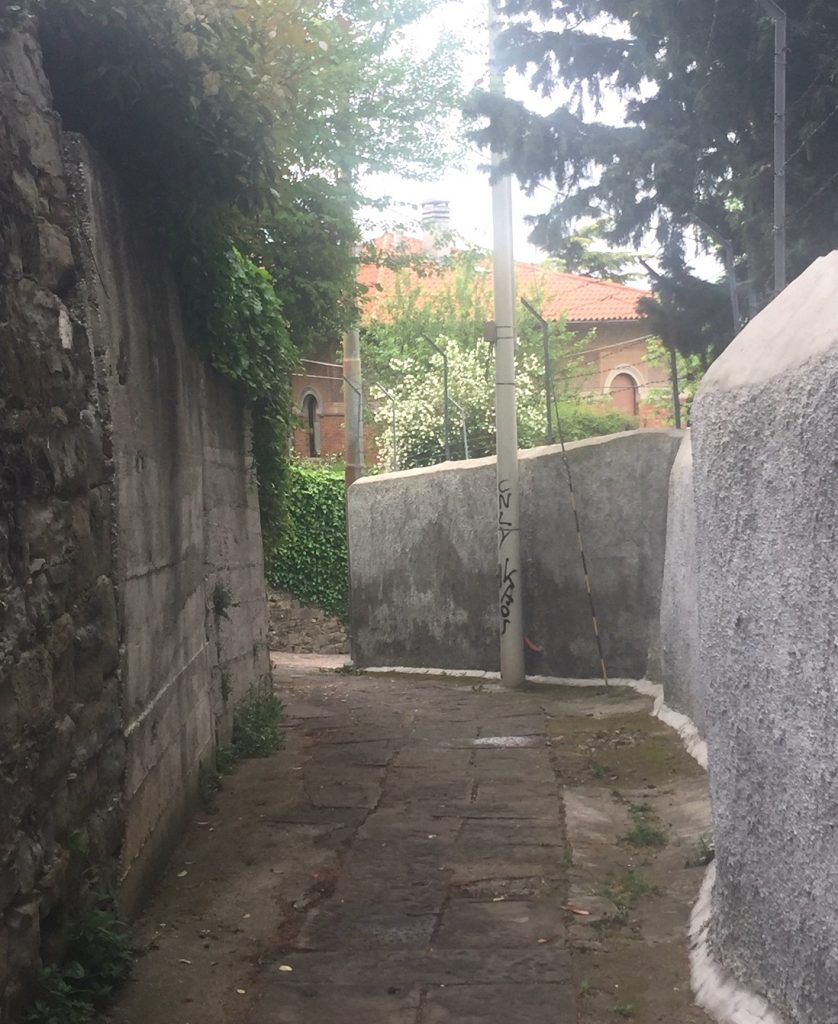
Almost at the top of the hill of Scorcola stands what is today known as Il Castelletto, an exclusive private English school, The European School.
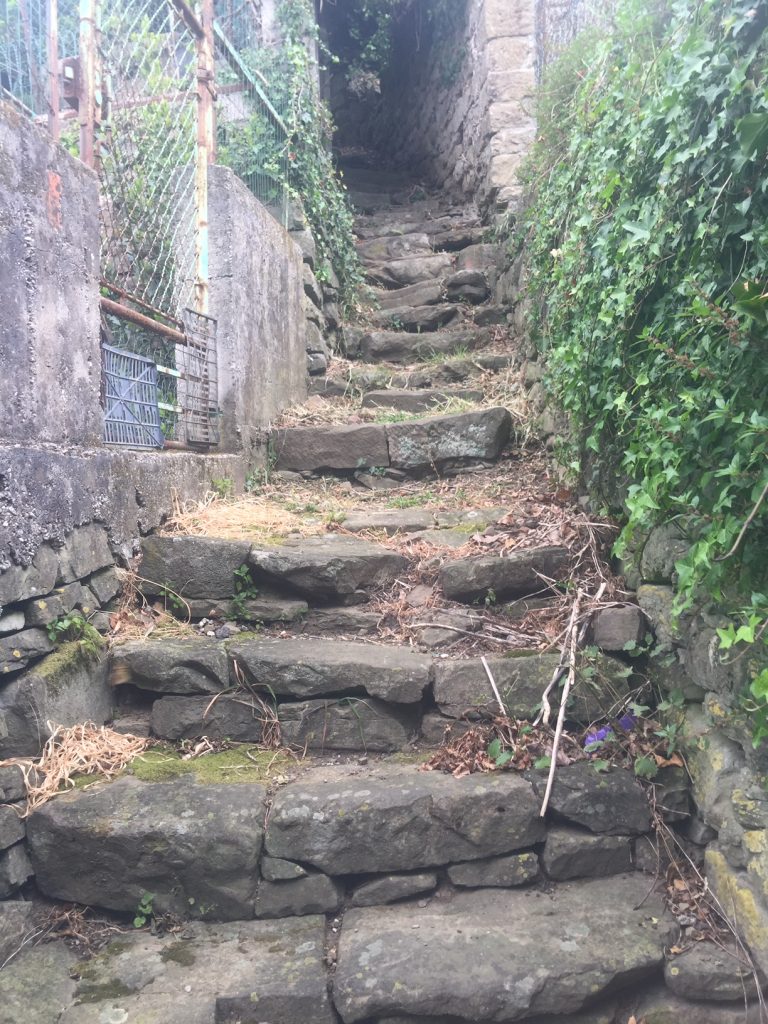
You can’t visit it, in fact you can’t really go near, but you can see it standing a the top of the hill just about from everywhere in Trieste. The real name is Villa Geiringer, and it belonged to the architect and engineer Eugenio Geiringer.
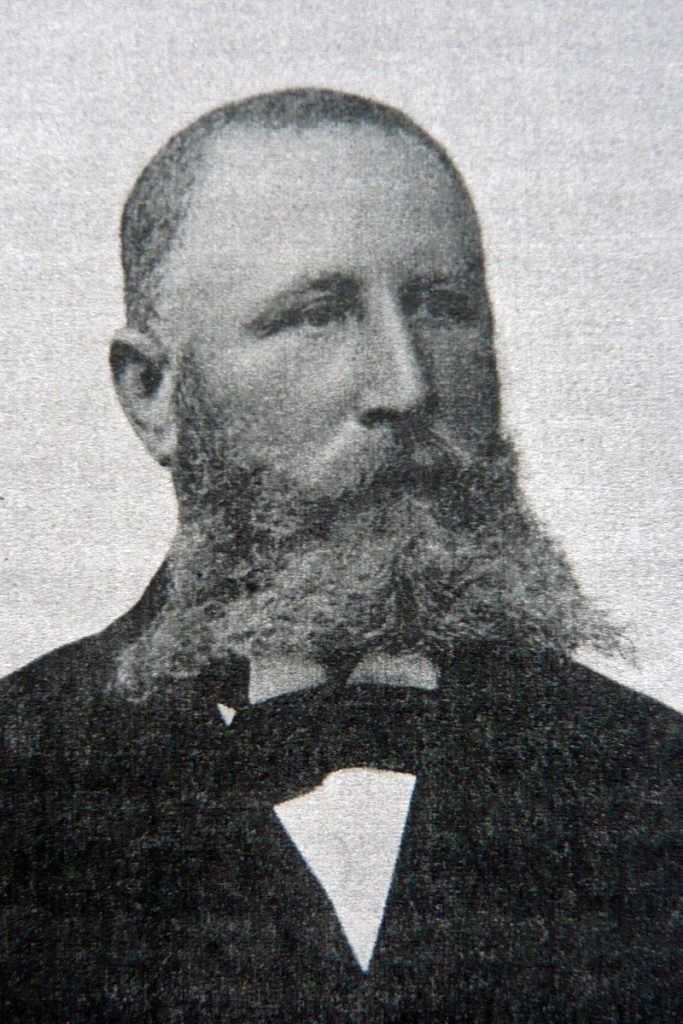
He bought and renovated the property in 1888, preserving its medieval castle style. It was he who launched the project of a cable railway to connect Trieste to the steep hill of Scorcola, what later became Trieste’s famous, and unfortunate, tram.
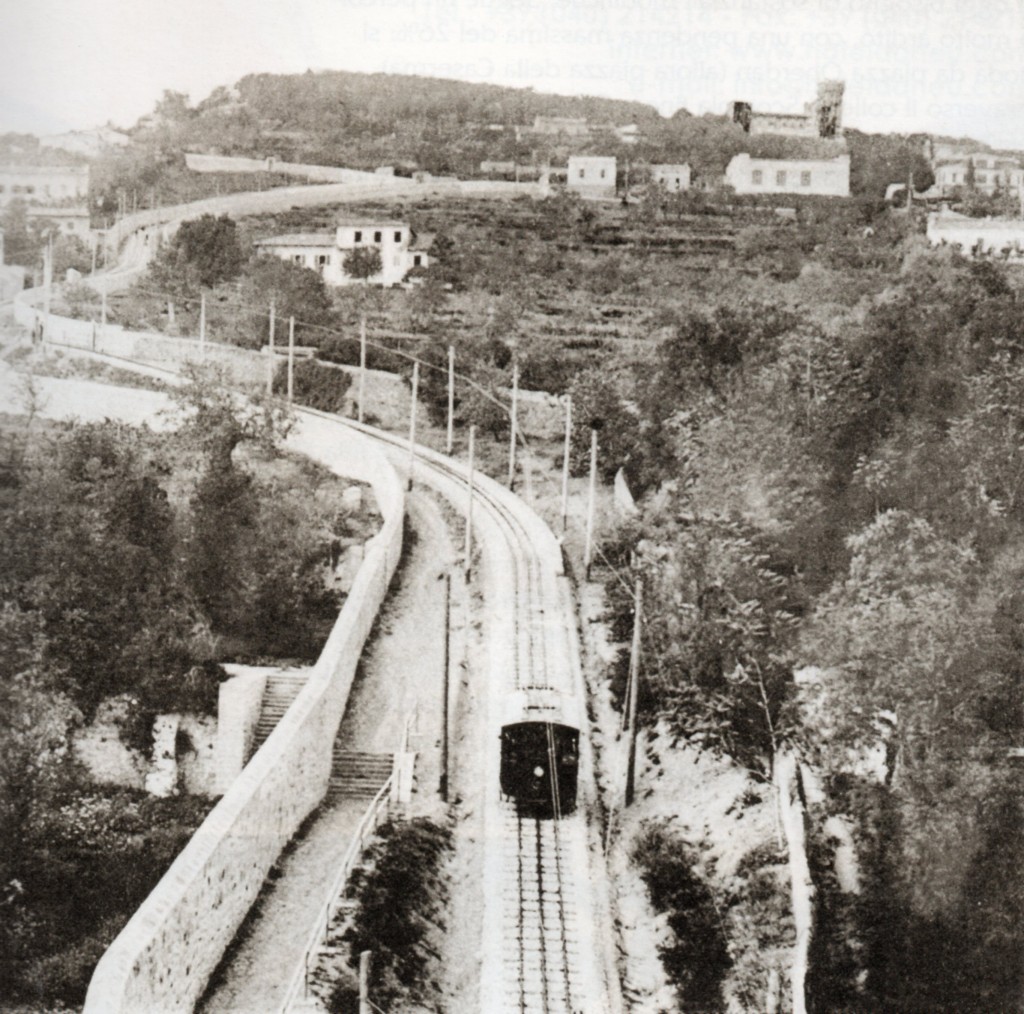
Eugenio’s father, Ruben Isach Roberto Geiringer, came from a small Slovak village near Bratislava and in Trieste married Eva Morpurgo, the rich daughter of the influential Morpurgos, founders of Assicurazioni Generali. Eugenio Geiringer and his beloved wife Ortensia lived in the exclusive castle for many years, brought many improvements to the whole area, and had seven children who later inherited the property. In the 1930s part of the immense park was sold to the municipality, and was made into a public green area, known today as Villa Giulia.
One of Eugenio’s sons, Pietro, director of Generali, was deported and died in Auschwitz together with his wife Francesca Vivante. Between 1943 and 1945 the Nazis established in Villa Geiringer one of the headquarters of the Wehrmacht command. The Germans added a bunker and a line of fortifications, later destroyed by the Allied forces. After liberation, the Allied Military Government used the villa as a hospital for the wounded, while the rest of the property hosted military barracks. The flatter part of the park was used as a sports trackfield for American soldiers, known today as Campo Cologna.

While lost in the maze of tiny alleys on the hill of Scorcola, a little before reaching the top, take a little lane to the left surrounded by yellow walls. It will take you to a bizarre house in Via Giovenale 1.
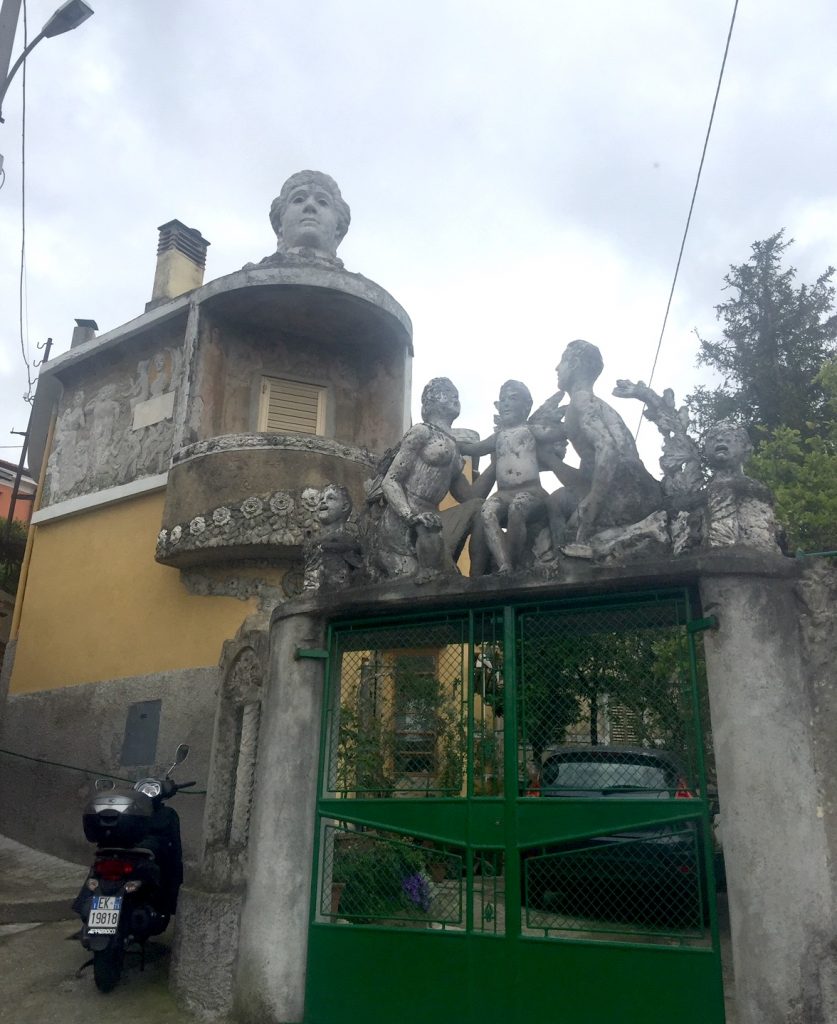
The whole house, now divided into apartments, is a collection of neoclassical and art-deco decorations and statues that greatly jar with its surroundings.

Story goes that not too long ago its original owner, an eccentric artist, attempted to give his house a touch of his talent, a unique look. He made all decorations himself transforming a humble peasant semi-detached home into a weird, almost Gaudì-looking, somewhat tacky creature.
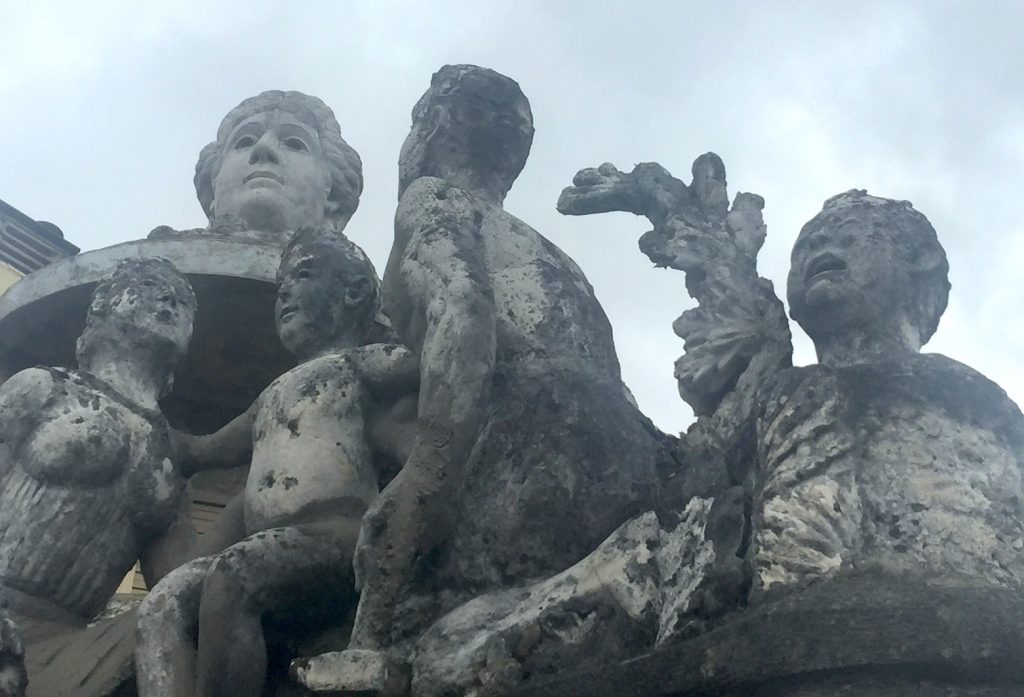
It is nevertheless quite a sight. Feel free to go back into town the way you came or follow Via Giovenale down to Via Commerciale, and you’ll be back to your starting point in Piazza Oberdan in less than ten minutes.

























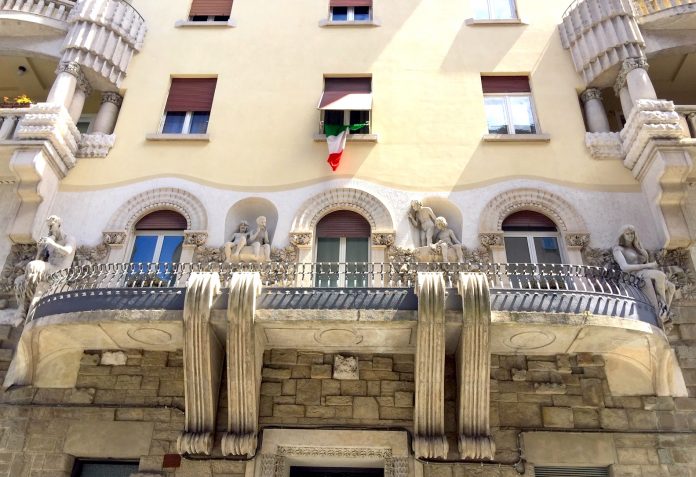




Grazie, for Article on Scorcola.
grazie, molto carino l’articolo su Scòrcola. Durante le mie vacanze natalizie triestine mi è proprio capitato di arrampicarmi su per la Salita Trenovia ed ho ritrovato, nelle sue foto, molti degli scorci intravisti. La me saludi tanto la mia Trieste!
Enrico Bonaiti – Buchbinder